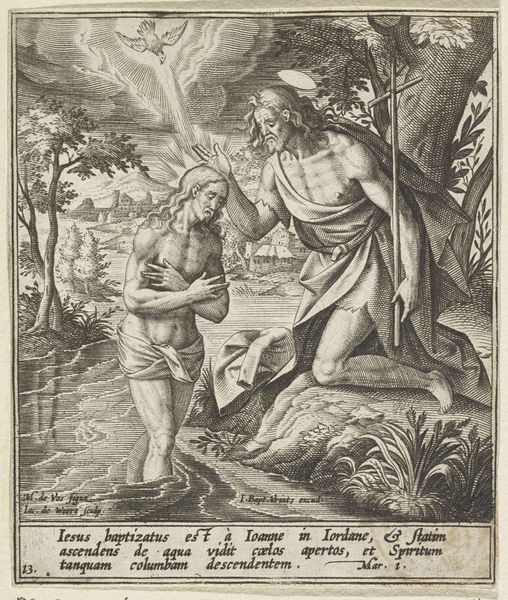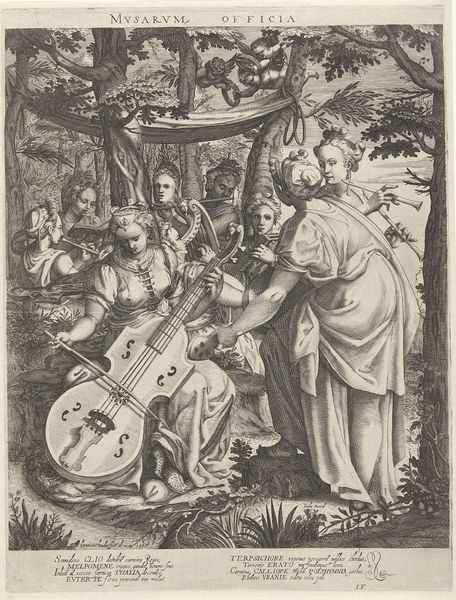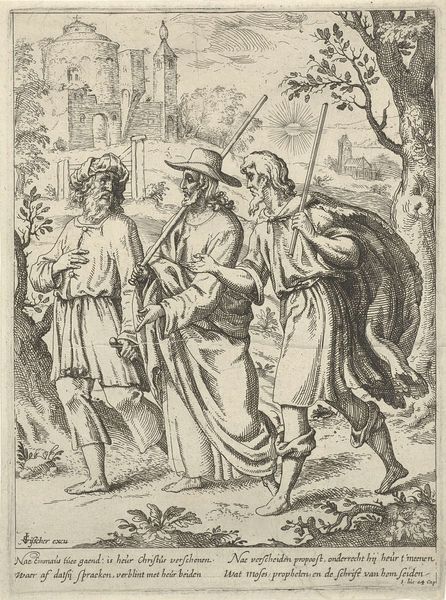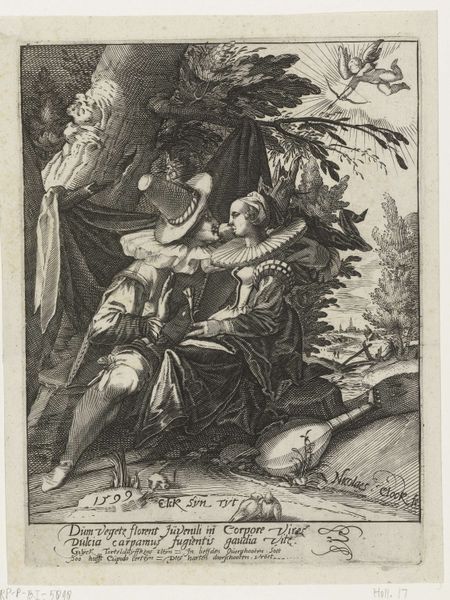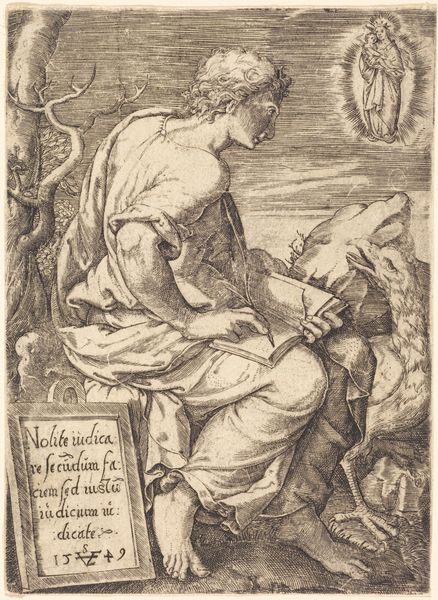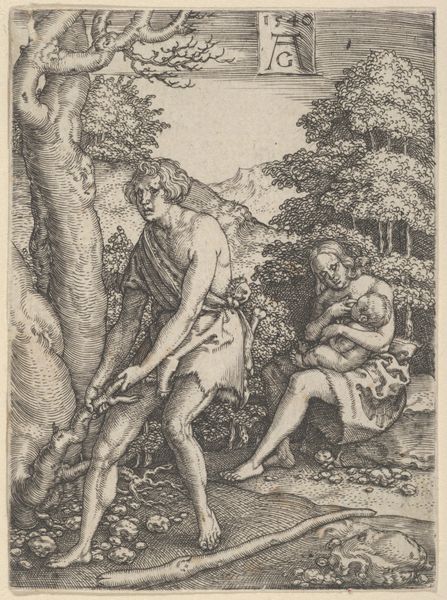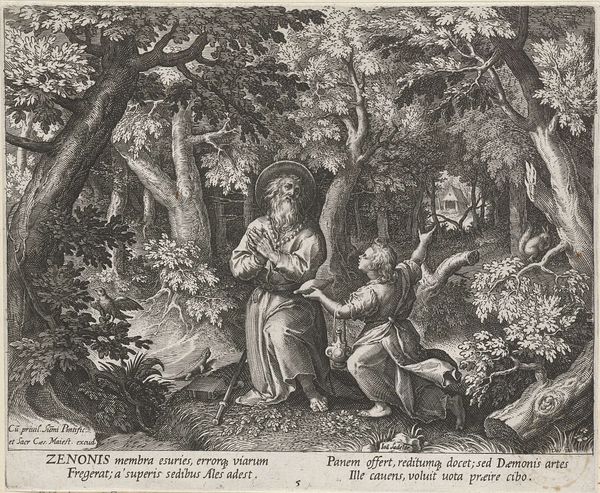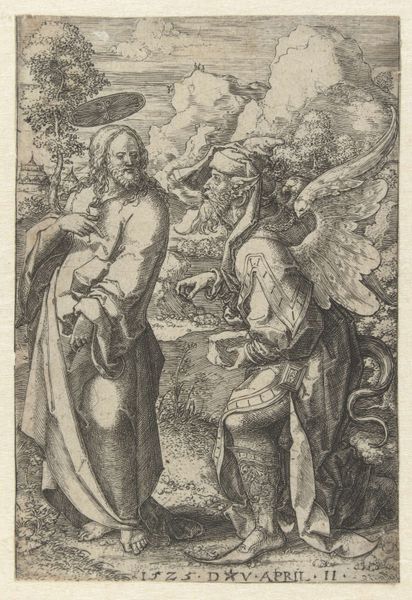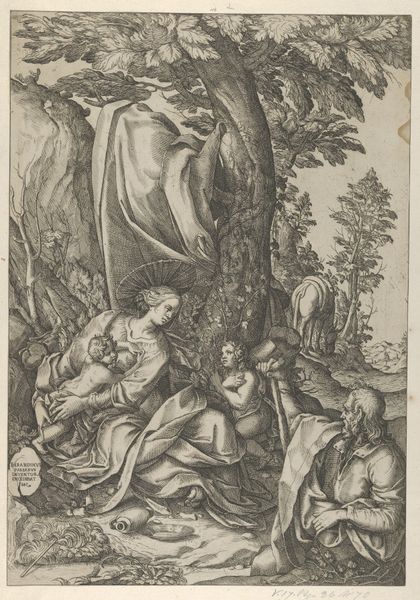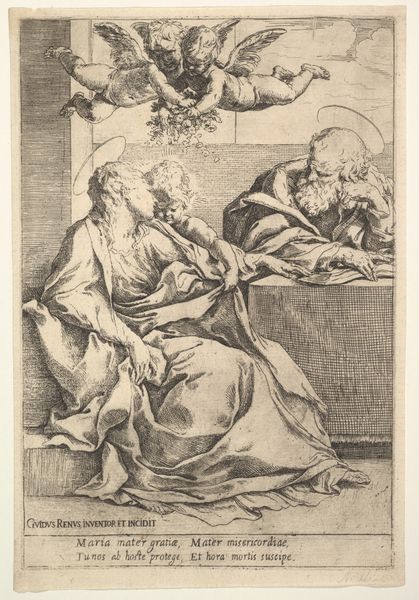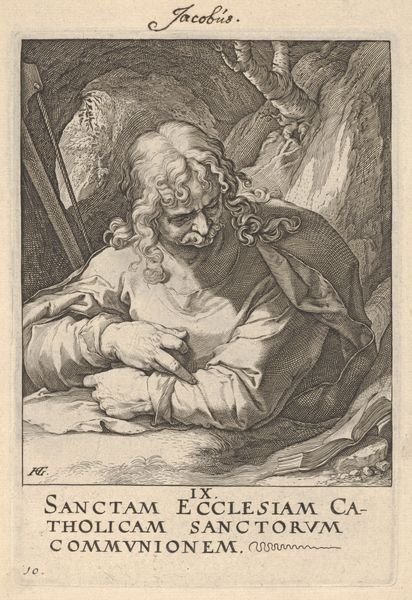
print, ink, engraving
#
medieval
# print
#
landscape
#
mannerism
#
figuration
#
ink
#
history-painting
#
engraving
Dimensions: height 108 mm, width 90 mm
Copyright: Rijks Museum: Open Domain
Curator: I'm immediately drawn to the somber mood evoked by the stark contrast in this black and white print. The intricate linework creates a scene that feels both intimate and expansive. Editor: This engraving, created sometime between 1580 and 1600 by Jacob de Weert, is entitled "Johannes de Doper en Christus in de wildernis," which translates to "John the Baptist and Christ in the Wilderness." It’s an excellent example of Mannerist printmaking. Note how it juxtaposes this very detailed naturalistic scene with religious figuration. Curator: Precisely! Considering the time, these dense landscapes were frequently coded as feminine spaces. This creates a contrast with the masculine figures inhabiting this space, playing with gendered understandings of the wild. The contrast seems particularly evident in their very bodies; what do you make of that? Editor: It speaks to the visual culture of the period and the public role of religious imagery. The way Christ and John are depicted is conventional for the era but also politically charged. The bodies conform to contemporary standards and convey theological meaning but have their roots in social constructions, particularly the positioning of Christ’s sacrifice as central to social stability. Curator: This makes me think about the original intent for the audience, considering its engagement with the social role of religion at that specific historical conjuncture. It forces me to reflect on today’s issues – power, representation, access. How do we contend with its visual language and what it reflects about social structures, particularly through religion, in both its moment and our own? Editor: That's a really powerful connection. Examining art like this lets us understand the historical forces that continue to shape our world. Considering its time and how such depictions played a role in faith, law and customs invites us to contend with them. I mean, what kind of contemporary imagery performs the same socio-political function these days? Curator: And understanding that impact creates space to begin critically reimagining our own future! Thanks for making me rethink how the wild relates to depictions of religious male figures. Editor: It has been equally rewarding. Considering how museums and the forces of power are deeply rooted within representations of this piece certainly gave it another nuance.
Comments
No comments
Be the first to comment and join the conversation on the ultimate creative platform.
